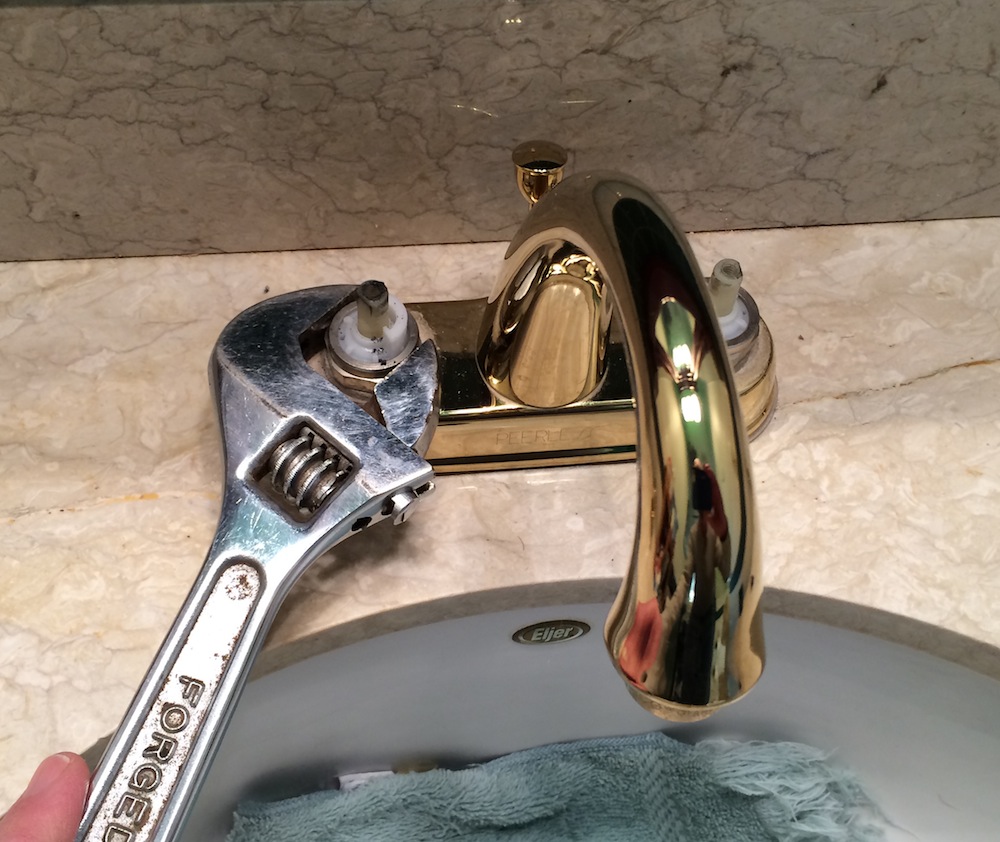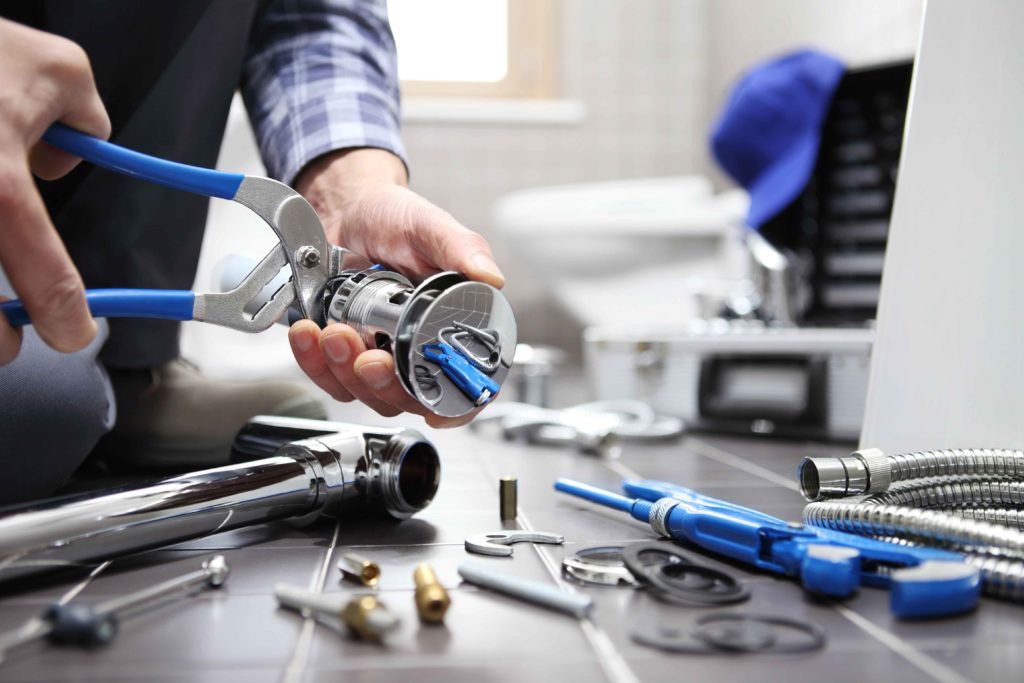Exploring the Significance of Repairing a Broken Faucet
Exploring the Significance of Repairing a Broken Faucet
Blog Article
How do you really feel in relation to Water Dripping from Faucet: Why and How to Fix?

Leaking taps might appear like a small hassle, yet their impact exceeds simply the aggravation of the sound. From wasting water to sustaining unnecessary monetary prices and wellness risks, disregarding a leaking tap can bring about numerous consequences. In this article, we'll explore why it's important to resolve this typical family issue promptly and effectively.
Wastage of Water
Environmental Influence
Trickling taps add substantially to water waste. According to the Environmental Protection Agency (EPA), a single tap trickling at one drip per second can lose more than 3,000 gallons of water per year. This not just stress water resources however also impacts ecosystems and wildlife based on them.
Financial Prices
Enhanced Water Costs
Past the ecological effect, trickling faucets can inflate water costs considerably. The gathered waste with time converts right into higher utility expenses, which could have been stayed clear of with prompt repairs.
Potential Home Damage
Moreover, long term leaking can result in harm to fixtures and surface areas surrounding the tap. Water buildup can cause discoloration, rust, and also structural issues if left neglected, resulting in added repair work prices.
Wellness Worries
Mold and Mold Growth
The continuous visibility of moisture from a leaking faucet produces an ideal environment for mold and mildew and mildew development. These fungis not just jeopardize indoor air top quality yet also present wellness threats, particularly for individuals with breathing problems or allergic reactions.
Waterborne Conditions
Stagnant water in dripping faucets can become a breeding place for bacteria and other pathogens, increasing the danger of waterborne illness. Impurities such as Legionella germs flourish in stationary water, potentially causing serious health problems when consumed or breathed in.
DIY vs. Professional Repair work
Pros and Cons of Do It Yourself Repair Work
While some might attempt to take care of a dripping faucet themselves, do it yourself fixings feature their very own collection of difficulties. Without correct knowledge and devices, do it yourself efforts can intensify the problem or lead to insufficient repair services, prolonging the issue.
Benefits of Employing a Professional Plumber
Employing a specialist plumber guarantees that the underlying source of the leaking tap is dealt with successfully. Plumbings have the knowledge and tools to detect and repair faucet issues efficiently, saving time and lessening the threat of more damage.
Step-by-Step Overview to Fixing a Dripping Tap
Tools Needed
Before attempting to deal with a leaking tap, collect the necessary devices, consisting of a flexible wrench, screwdrivers, replacement parts (such as washing machines or cartridges), and plumber's tape.
Usual Tap Issues and Their Solutions
Determine the type of faucet and the details concern causing the drip. Usual issues include damaged washers, rusty valve seats, or malfunctioning O-rings. Refer to producer directions or online tutorials for detailed guidance on repairs.
Preventive Measures
Normal Maintenance Tips
To avoid leaking taps, perform routine upkeep such as cleansing aerators, inspecting for leaks, and replacing worn-out parts without delay. Additionally, consider installing water-saving devices or upgrading to much more efficient fixtures.
Importance of Prompt Repairs
Dealing with dripping faucets as quickly as they're seen stops additional water wastefulness and prospective damage, ultimately conserving both water and money in the long run.
Impact on Residential Property Value
Assumption of Well-Maintained Building
Maintaining a building in good condition, consisting of dealing with maintenance concerns like trickling taps, improves its perceived value and worth amongst prospective buyers or tenants.
Impact on Resale Value
Residences with well-kept plumbing components, consisting of faucets, command greater resale values in the property market. Attending to leaking taps can contribute to a favorable perception during building assessments and negotiations.
Environmental Obligation
Individual Contribution to Conservation
Taking obligation for taking care of trickling faucets lines up with broader initiatives towards water conservation and environmental sustainability. Every individual's activities jointly make a significant influence on protecting precious sources.
Lasting Living Practices
By focusing on punctual repairs and adopting water-saving behaviors, people contribute to sustainable living techniques that profit both present and future generations.
Verdict
Resolving a leaking faucet surpasses mere ease; it's an important action toward conserving water, lowering monetary prices, and protecting wellness and building. Whether through do it yourself repairs or expert aid, taking action to take care of dripping faucets is a little yet impactful means to advertise accountable stewardship of sources and add to a healthier, much more lasting future.
How to Fix a Leaky Faucet: Step-by-Step Repair Guide
A leaky faucet may seem like a simple annoyance, but if it's not fixed promptly, that leak could cost hundreds to potentially thousands. From water damage to mold, mildew, and high water bills, even a tiny leak can be catastrophic if left unattended. Damage like this can even affect the overall value of your home, so it's important to take the right approach for leaky faucet repair. You may need the help of a plumber in some cases, but we've got a few tips you can try on how to fix a leaky faucet before calling the pros.
Four Faucet Types
When you're learning how to fix a leaky faucet, the first step is knowing what kind of faucet you're working with! There are four common types.
Cartridge Faucets
Cartridge faucets come in one- or two-handled varieties. In one-handled cartridge faucets, hot and cold water combines in a single cartridge. In the two-handled versions, hot and cold water are controlled separately and mixed in the faucet.
Ball Faucets
Ball faucets have a single lever you push up and down to adjust the pressure and rotate to change the temperature. A slotted metal ball controls the amount of water allowed into the spout.
Compression Washer Faucets
They're the oldest type of faucet, but they're still used in many homes — especially older ones. Compression faucets have two separate handles that, when turned, raise or lower the washer that seals a water valve. This valve stops water from flowing through the faucet when it is turned off.
Disc Faucets
Disc faucets rarely need to be repaired due to their maintenance-free design. The water flow is controlled by two discs — the upper one raises and lowers against a fixed lower disc, creating a watertight seal. If your disc faucet starts leaking, you may need to replace the seals or clean residue buildup from the inlets.
Fixing a Leaky Faucet
Step 1: Turn Off the Water
Whether you're learning how to fix a leaky bathtub faucet or how to fix a leaky kitchen faucet, always turn off the water supply to your working area when you're fixing a leak. The last thing you want is a flood added to your list of things to fix.
Look for the shutoff valves below your sink or around the tub and turn them clockwise to stop the water flow. If your faucet doesn't have shutoff valves, you may need to turn off the water for the whole house. Check to make sure it's off by turning the faucet on. If nothing comes out, you're ready to start the repair.
Step 2: Take Apart the Faucet
How you disassemble your faucet depends on the type of fixture you have. You can use a flathead screwdriver to remove the caps on top of the handle or handles for cartridge and compression faucets. Inside, you should see handle screws. Unscrew these with a screwdriver to remove the handle.
Disc- and ball-style faucets will typically have an inlet screw near the handle, and removing that will reveal the interior of the faucet.
Detach the Valve Stem
For cartridge- and compression-style faucets, you'll see the inner valve stem or cartridge once you remove the faucet handles. If you have a compression faucet, unscrew the brass valve stem. If you have a cartridge faucet, pull out the cartridge. If your cartridge has been in place for a while, it may require some tools or extra force to remove it due to mineral deposits.
Examine and Replace Parts
Once you've removed the parts, check them out to confirm what needs to be replaced. You may see corroded rubber washers, O-rings, stems, or cartridges. On a ball-style faucet, check the seats and springs for damage.
If you need to repair a leaky disc faucet, check the inlet and seals on the lower disc.
Once you determine what parts must be replaced, visit your local hardware store. Bring the damaged parts with you to ensure you can purchase the correct components to replace them.
Clean Valves and Faucet Cavity
If you've removed a stem or cartridge, you may notice mineral buildup in the faucet's threads. Use white vinegar to clean the valve seat by soaking it for a few minutes, then scrub it away with a soft toothbrush and rinse with warm water. You can also clean the interior of the faucet in the same way.
Reassemble the Faucet
Once your faucet is cleaned and the required parts have been replaced, it's time to reassemble it. Put the pieces back together and slowly turn the water supply back on. Doing this slowly is crucial because too much initial water pressure can damage the new hardware you've just installed.
https://homewarranty.firstam.com/blog/how-to-fix-leaky-faucet

As a passionate reader on How to Fix a Dripping or Leaky Faucet , I imagined sharing that short article was really helpful. Sharing is nice. Helping others is fun. Kudos for being here. Return soon.
Report this page